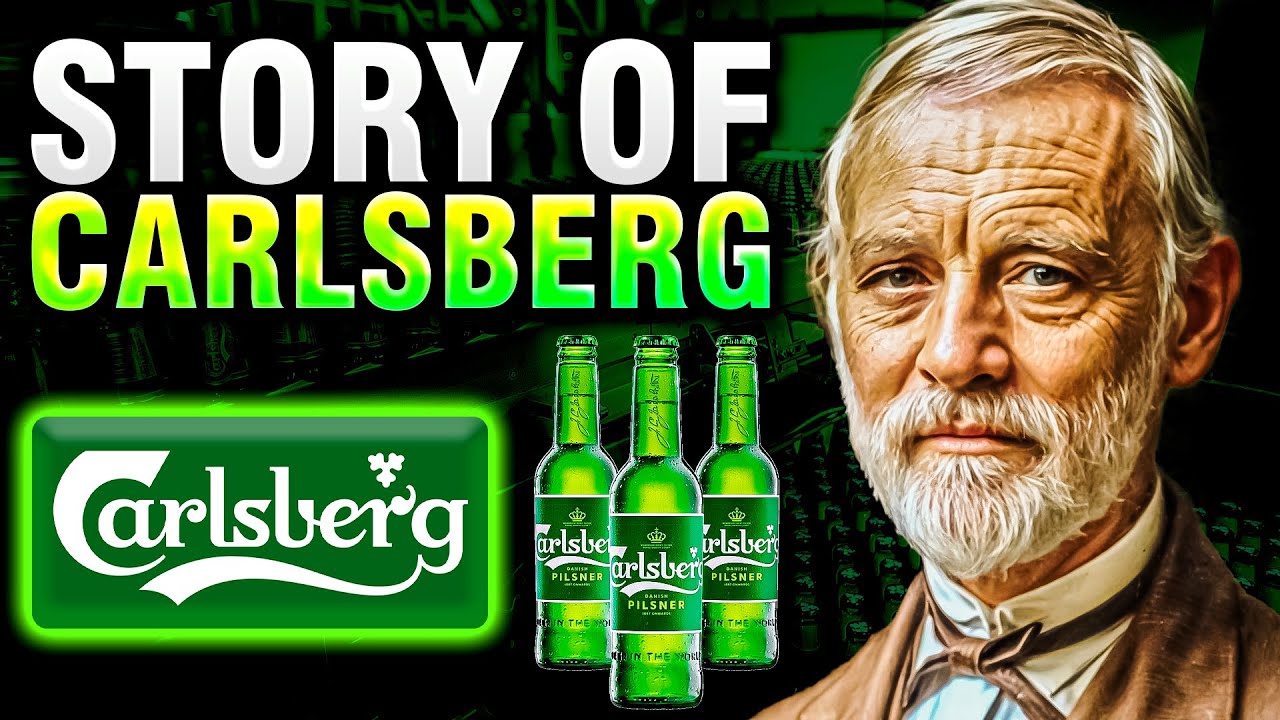He founded his factory by carrying brewer's yeast in his hat: Who is Jacob Jacobsen?
In 1847, Jacob Jacobsen, living in Copenhagen, the capital of Denmark, founded a small brewery. The factory established was named Carlsberg Factories and thus the story of Carlsberg beer, which would turn into a world brand, began.

Jacob Jacobsen's main goal is to produce high-quality, consistent-tasting beer. In this context, he did many experiments and finally found the taste, aroma, and quality he was looking for and started production.
Founded in Copenhagen, Denmark, in 1847, Carlsberg takes its name from the son of its founder, Jacob Jacobsen. Jacobsen, who established the factory in a hilly region, named the brand Carlsberg, meaning Carl's Hill. Elephant statues were used at the entrance of the factory because they are thought to bring good luck according to Indian belief, and the elephants represent the 4 children of Jacobsen, the founder of the brand.
Who is Jacob Jacobsen?
Jacob Christian Jacobsen (2 September 1811 – 30 April 1887), mostly known as J C Jacobsen, was a Danish tycoon and philanthropist best known for founding the Carlsberg brewery.
He had no formal education. In the 1840s he realized that beer production, which had until then been done in numerous small breweries, now had to rely on the scientific method to industrialize.
Jacob Christian Jacobsen (2 September 1811 – 30 April 1887), mostly known as J. C. Jacobsen, was a Danish industrialist and philanthropist best known for founding the brewery Carlsberg.
From 1847 he founded the Carlsberg brewery in Valby on the outskirts of Copenhagen, where it has been ever since. He named the brewery after his son Carl Jacobsen. Extremely zealous about producing high-quality beer, Jacobsen founded the Carlsberg Laboratory in 1875.
He took a keen interest in public affairs and supported the increasingly conservative National Liberal Party, both as a Member of Parliament for some periods between 1854 and 1871 and as a strong supporter of the defense of Denmark. He served on the Copenhagen City Council from 1843 to 1857. He was also a well-known patron of the arts. He financed the reconstruction efforts of Frederiksborg Palace after its fire in 1859.
Jacobsen founded the Carlsberg Foundation (Carlsbergfondet) in 1876 and, due to family tensions, gave this foundation a controlling stake in Carlsberg. A bitter conflict with his son Carl led him to found the Ny Carlsberg (New Carlsberg) Brewery in 1882. However, a mutual compromise was reached in 1886.
His son Carl Jacobsen amassed one of the largest private art collections of his time. This collection is currently exhibited in the Ny Carlsberg Glyptotek museum he founded in Copenhagen.
In 1879 he became an honorary doctor of the Faculty of Science at the University of Copenhagen.
Another version of the story
Jacob Christian Jacobsen, the founder of Carlsberg, learned beer brewing techniques at the Zum Spaten brewery in Munich, driven by his passion for beer and interest in natural sciences. In the summer of 1845, he returned to Denmark with two containers of Spaten yeast in a special hat box.
J C Jacobsen made his first batches of beer in his mother's copper sink. Taking the name of his five-year-old son Carl and the Danish word "bjerg" meaning hill, he built his new brewery just outside Copenhagen, and Carlsberg was born in 1847.
When Carl, from whom Carlsberg was named, grew up and received training in beer production in Europe and returned to his country, he created a new Carlsberg brand instead of helping his father. When he produced more products in a shorter time than his father, he surpassed his father in the market. Then, just before father and son died, they made peace and merged the two Carlsbergs.
Baba Jacobsen is known as someone who attaches great importance to science and innovation to make better beer. He founded the Carlsberg Laboratory in 1875 and published a protocol stating that everything discovered would be shared freely.
In the laboratory established at that time, while using beer from previous production to ferment beer, Emil C Hansen discovered a method of isolating yeast so that brewers could use fresh yeast during each fermentation.
This yeast was called Saccharomyces Carlsbergensis and was distributed free of charge to everyone, including other brewers, until 1988. This process changed all beer production globally. Besides yeast, the Carlsberg Foundation also discovered the pH scale, which became an international system for measuring hydrogen ion levels in solutions.
Carlsberg made its first overseas sale to England in 1868. It received its first production license outside its country in 1966, approximately 100 years later, and made its first production at Photiades Breweries in Cyprus. He founded his first brewery outside Denmark in Blantyre, Malawi, in 1968.
Carlsberg Beer Lab
Although it has a quality taste and aroma, Carlsberg attaches importance to R&D and has established a beer laboratory. While some sources say the year of establishment of this laboratory is 1875, some sources state it as 1876.
With this laboratory, beer production is based on scientific foundations and production is standardized. Emil Christian Hansen was the head of the laboratory and carried out very important studies on yeast. The work done by Hansen to isolate yeast cultures ensured standard and high-quality beer production.
The Process of Becoming a Global Brand
Carlsberg grew rapidly in the late 19th and early 20th centuries. New facilities were added to the factory and production capacity was increased. Carlsberg became Denmark's leading beer producer and its exports began to increase. In the 1960s and 1970s, Carlsberg became a global power by acquiring a number of breweries around the world.
Its quality beers helped Carlsberg gain international popularity in a short time. With the subsequent steps taken, the process accelerated and it became a global brand in the second half of the 19th century.
